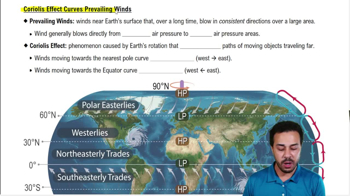Table of contents
- 1. Introduction to Biology2h 40m
- 2. Chemistry3h 40m
- 3. Water1h 26m
- 4. Biomolecules2h 23m
- 5. Cell Components2h 26m
- 6. The Membrane2h 31m
- 7. Energy and Metabolism2h 0m
- 8. Respiration2h 40m
- 9. Photosynthesis2h 49m
- 10. Cell Signaling59m
- 11. Cell Division2h 47m
- 12. Meiosis2h 0m
- 13. Mendelian Genetics4h 41m
- Introduction to Mendel's Experiments7m
- Genotype vs. Phenotype17m
- Punnett Squares13m
- Mendel's Experiments26m
- Mendel's Laws18m
- Monohybrid Crosses16m
- Test Crosses14m
- Dihybrid Crosses20m
- Punnett Square Probability26m
- Incomplete Dominance vs. Codominance20m
- Epistasis7m
- Non-Mendelian Genetics12m
- Pedigrees6m
- Autosomal Inheritance21m
- Sex-Linked Inheritance43m
- X-Inactivation9m
- 14. DNA Synthesis2h 27m
- 15. Gene Expression3h 20m
- 16. Regulation of Expression3h 31m
- Introduction to Regulation of Gene Expression13m
- Prokaryotic Gene Regulation via Operons27m
- The Lac Operon21m
- Glucose's Impact on Lac Operon25m
- The Trp Operon20m
- Review of the Lac Operon & Trp Operon11m
- Introduction to Eukaryotic Gene Regulation9m
- Eukaryotic Chromatin Modifications16m
- Eukaryotic Transcriptional Control22m
- Eukaryotic Post-Transcriptional Regulation28m
- Eukaryotic Post-Translational Regulation13m
- 17. Viruses37m
- 18. Biotechnology2h 58m
- 19. Genomics17m
- 20. Development1h 5m
- 21. Evolution3h 1m
- 22. Evolution of Populations3h 52m
- 23. Speciation1h 37m
- 24. History of Life on Earth2h 6m
- 25. Phylogeny2h 31m
- 26. Prokaryotes4h 59m
- 27. Protists1h 12m
- 28. Plants1h 22m
- 29. Fungi36m
- 30. Overview of Animals34m
- 31. Invertebrates1h 2m
- 32. Vertebrates50m
- 33. Plant Anatomy1h 3m
- 34. Vascular Plant Transport2m
- 35. Soil37m
- 36. Plant Reproduction47m
- 37. Plant Sensation and Response1h 9m
- 38. Animal Form and Function1h 19m
- 39. Digestive System10m
- 40. Circulatory System1h 57m
- 41. Immune System1h 12m
- 42. Osmoregulation and Excretion50m
- 43. Endocrine System4m
- 44. Animal Reproduction2m
- 45. Nervous System55m
- 46. Sensory Systems46m
- 47. Muscle Systems23m
- 48. Ecology3h 11m
- Introduction to Ecology20m
- Biogeography14m
- Earth's Climate Patterns50m
- Introduction to Terrestrial Biomes10m
- Terrestrial Biomes: Near Equator13m
- Terrestrial Biomes: Temperate Regions10m
- Terrestrial Biomes: Northern Regions15m
- Introduction to Aquatic Biomes27m
- Freshwater Aquatic Biomes14m
- Marine Aquatic Biomes13m
- 49. Animal Behavior28m
- 50. Population Ecology3h 41m
- Introduction to Population Ecology28m
- Population Sampling Methods23m
- Life History12m
- Population Demography17m
- Factors Limiting Population Growth14m
- Introduction to Population Growth Models22m
- Linear Population Growth6m
- Exponential Population Growth29m
- Logistic Population Growth32m
- r/K Selection10m
- The Human Population22m
- 51. Community Ecology2h 46m
- Introduction to Community Ecology2m
- Introduction to Community Interactions9m
- Community Interactions: Competition (-/-)38m
- Community Interactions: Exploitation (+/-)23m
- Community Interactions: Mutualism (+/+) & Commensalism (+/0)9m
- Community Structure35m
- Community Dynamics26m
- Geographic Impact on Communities21m
- 52. Ecosystems2h 36m
- 53. Conservation Biology24m
53. Conservation Biology
Conservation Biology
Problem 2a
Textbook Question
Textbook QuestionCarbon dioxide functions as a greenhouse gas by . a. interfering with water's ability to absorb heat; b. increasing the random molecular motions of oxygen; c. allowing radiation from the sun to reach Earth and absorbing the re-radiated heat; d. splitting into carbon and oxygen and increasing the rate of cellular respiration
 Verified step by step guidance
Verified step by step guidance1
Identify the role of greenhouse gases in the Earth's atmosphere. Greenhouse gases, such as carbon dioxide, trap heat in the atmosphere and help maintain Earth's temperature.
Understand the process of solar radiation and Earth's re-radiation. The sun emits radiation that reaches Earth, and Earth absorbs some of this energy and re-radiates it as heat.
Analyze the options given in the question to determine which one correctly describes how carbon dioxide functions as a greenhouse gas.
Consider the mechanism by which carbon dioxide traps heat. It does not interfere with water's heat absorption, nor does it increase molecular motions of oxygen or split into carbon and oxygen.
Conclude that the correct answer involves carbon dioxide allowing solar radiation to reach Earth and then absorbing the heat that is re-radiated by Earth.
Recommended similar problem, with video answer:
 Verified Solution
Verified SolutionThis video solution was recommended by our tutors as helpful for the problem above
Video duration:
46sPlay a video:
Was this helpful?
Key Concepts
Here are the essential concepts you must grasp in order to answer the question correctly.
Greenhouse Effect
The greenhouse effect is a natural process where certain gases in Earth's atmosphere trap heat, preventing it from escaping back into space. This process is essential for maintaining the planet's temperature, allowing it to support life. Greenhouse gases, such as carbon dioxide, absorb and re-radiate infrared radiation, contributing to this warming effect.
Recommended video:
Guided course

Coriolis Effect Curves Prevailing Winds
Role of Carbon Dioxide
Carbon dioxide (CO2) is a significant greenhouse gas that plays a crucial role in the greenhouse effect. It allows sunlight to enter the atmosphere but traps some of the heat that is re-radiated from the Earth's surface. This property makes CO2 vital for regulating the Earth's climate, but excessive concentrations can lead to global warming.
Recommended video:
Guided course

Carbon
Radiative Forcing
Radiative forcing refers to the change in energy balance in the Earth's atmosphere due to factors like greenhouse gas concentrations. Positive radiative forcing, caused by increased greenhouse gases, leads to warming, while negative forcing can lead to cooling. Understanding radiative forcing is essential for assessing the impact of human activities on climate change.
Recommended video:
Guided course

Cohesion-Tension Theory

 3:56m
3:56mWatch next
Master Conservation Biology and Biodiversity with a bite sized video explanation from Jason Amores Sumpter
Start learningRelated Videos
Related Practice








































